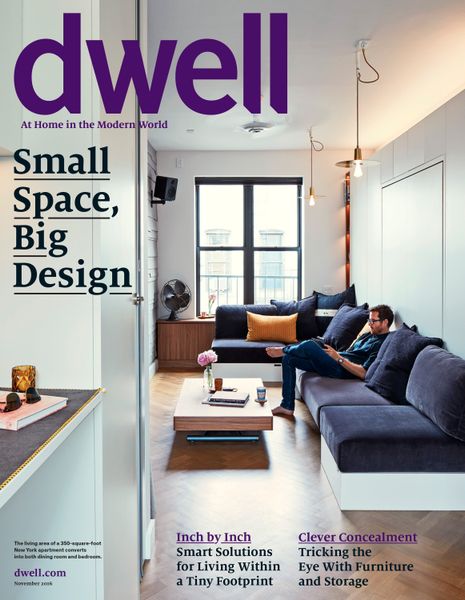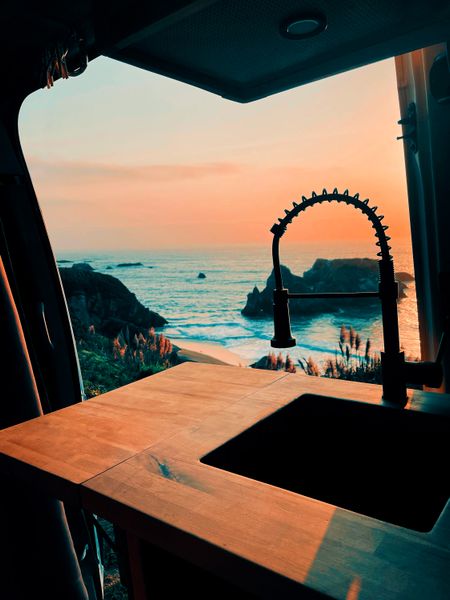Over the past 25 years, we’ve featured thousands of homes, each with its own identity. Somehow, cumulatively, they’ve come to reflect a philosophy about what residential design ought to be
When Dwell hit newsstands in October 2000, its founders wanted to make a bold statement. “We’re staging a minor revolution,” wrote then-editor-in-chief Karrie Jacobs in “The Fruit Bowl Manifesto,” an essay that introduced the magazine’s point of view to readers. That revolution intended to prove that “good design is an integral part of real life.” The issue featured examples of this philosophy, including a 330-square-foot bachelor pad in Hong Kong, a renovated carriage house in Brooklyn Heights for a family of four, and the Phoenix home of two firefighters with an inventive roof made out of fabric. The location, style, and residents of these homes were wildly different, but they shared the manifesto’s optimistic perspective that it’s possible to create a thoughtful, well-designed space that represents exactly how you want to live.

The November 2016 issue of Dwell.
Photo: Brian W. Ferry
Jacobs and her team searched far and wide to find the homes that formed the magazine’s identity. “One of the things people kept saying to me is that all the good modernist houses are taken [claimed for exclusive publication by other titles], meaning that an upstart like Dwell would obviously have no access,” Jacobs says now. So they went to regions that most national shelter magazines didn’t cover—places like Baton Rouge, Omaha, and Louisville—to find interesting architects and clients who were trying something new with residential design and construction. It worked. “There were more of them than we could have imagined, and every single one of them was an incredible story,” she remembers. “The best thing was finding these people who were doing remarkable things. That was really satisfying to me.” And very satisfying to readers: Dwell soon gained a following and earned a National Magazine Award for General Excellence less than five years after it launched.
In the quarter century since “The Fruit Bowl Manifesto,” the “Dwell Home” has become ingrained in culture as a style—but what style that is is in the eye of the beholder. It has taken on many expressions, but the recurring visual and structural themes—prefabrication, midcentury modernism, Scandinavian minimalism, a strong connection to the outdoors, and small spaces—are found in those early issues. The access problem that skeptics warned Jacobs about eventually became nonexistent as architects and their clients began to pitch homes. Some of the most common—and heartwarming—letters Dwell has received over the years are notes from readers who share that the magazine inspired their dream homes. Sometimes the results look as if they could be published in the magazine; and sometimes, according to its editors, not so much.
The editorial direction affects the idea of a prototypical Dwell Home, too. When I worked at Dwell as an intern in summer 2010, the Unhappy Hipsters Tumblr—which had the tagline “It’s Lonely in the Modern World” and posted photos from the magazine with captions that mocked them—had just gone viral. After I joined full-time, there was an interest in publishing stories about homes that looked warmer and had more visual variety in order to prevent them from becoming fuel for the blog.
If you ask someone today what the Dwell Home looks like, they’ll usually have a specific vision that happens to align with their own fantasy of a modern house, despite a wider range of styles appearing in the magazine. To get a better sense of what the Dwell Home of the mind looks like, I talked to a few people who said the magazine informed their own projects.

“While cleaning up our bookcase, I came across the Dwell feature that started it all,” Sebastian Tondo emailed us about his apartment (pictured at top of article). It was inspired by this home featured in the magazine’s November 2016 issue, designed by Robert Garneau, whom Tondo ultimately hired to design his place.
Photos by Brian W. Ferry
Design magazines all represent some type of aspiration, but over the years, through many teams behind the scenes, a sense has remained that the Dwell Home is something a reader can attain, unlike what’s featured in celebrity-studded glossies. “For us, it has always been a resource and inspiration,” says Sebastian Tondo, who has read the magazine for 15 years. He and his partner often flip through to discover new furniture, but when they read about a 400-square-foot studio apartment in Manhattan renovated by Robert Garneau of Architecture Workshop PC in the magazine’s November 2016 issue, they scaled up their design ambitions. “We were like, ‘Wouldn’t it be great to have a well-designed studio apartment that can have multiple functions, given the price of real estate in New York?’”
Tondo held on to the issue for years. Then, in 2021, he and his partner hired Garneau to renovate their studio. They asked him to give more character to the place—which had undergone a “horrible” renovation sometime in the 1980s, Tondo says—and to ensure that it had a view to the window overlooking the Hudson River from every space. They received exactly what they wanted. “We love what we have,” he says. Reading the magazine helped make designing their home “feel more approachable,” Tondo says. This is especially true, he adds, if you don’t come from a background where architect-designed homes are the norm. Once they completed their renovation, they had a pinch-me moment. “Robert is an award-winning architect, he teaches at Columbia University, he has features in Dwell and Architectural Digest—I never thought that someday my home would be designed by someone like that,” Tondo says.

Chris Leclerc has driven all over the country in his Sprinter van, which he customized. Outfitted with Starlink for internet access and solar panels for power, “it was just this epic base camp for adventure,” Leclerc says, adding that he’s able to relax” in a five-star way” while being immersed in nature.
Photo courtesy Chris Leclerc
See the full story on Dwell.com: What Is a “Dwell Home,” Really?
Related stories:



